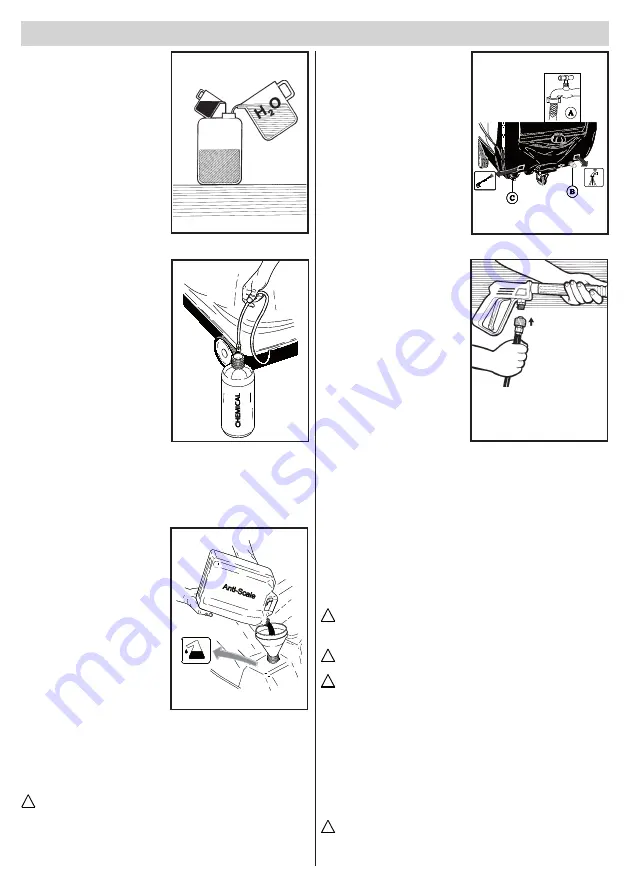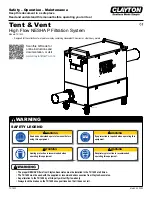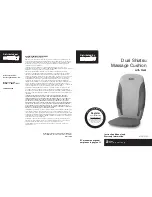
English
- 18 -
ELECTRICAL CONNECTION
Connection of the cleaner to the mains must be carried out
be skilled technicians able to ensure that all regulations in
force are complied with
use in respect of current standards
and legislation.
Ensure that the mains voltage available is the same as the vol-
tage at which the cleaner is supposed to work; this is indicated
on the identification plate.
The electric cable must be protected from accidental
crushing.
Do not use the machine if the supply cable is damaged.
The use of any electric appliance requires the respect of
some basic rules:
• Do not touch the appliance with wet or damp hands or feet.
• Do not use the appliance bare-footed or with unsuitable
clothing.
• Do not pull the supply cable or the appliance itself in order
to disconnect the plug from the electric supply.
(For water cleaners rated at less than 3 kW fitted with plug).
As for the protection against electric shock, the H.P.cleaner
belongs to CLASS I.
Failure to observe the above warning frees the manu
-
facturer from all responsibility and constitutes negligent
use of the product.
FIG. 3
COMMAND AND CONTROL DEVICES
Before connecting the machine to the water supply and
to the power mains, it is essential to know the function of the
cleaner's command and control devices.
FIG. 2
FIG. 6
FIG. 5
WATER CIRCUIT CONNEC
-
TION
Connect the feed hose to
the mains (fig. 5A) and to
the hosetail on the cleaner
(fig. 5B).
Check that the pressure and
quantity of the water supplied
by the mains are sufficient for
the cleaner to work properly: 2
to 8 BAR (29 to 116 PSI).
Maximum temperature of fee-
ding water 50°C (122°F).
Connect the high pressure
hose to the cleaner (fig. 5C)
and to the lance (fig. 6).
IMPORTANT.
The cleaner must operate
with clean water. Dirty or
sandy water, corrosive che
-
micals and solvents can
cause severe damage to
the cleaner.
Failure to respect the above
absolves the manufacturer
of all liability and repre
-
sents negligent use of the
product.
FILLING
THE DETERGENT
TANK
From the range of recommen-
ded products, choose the one
most suited to the washing job
to be done (fig. 2) and dilute
it with water according to the
instructions on the pack.
Fill the detergent tank with the
diluted product (fig. 3).
Ask your dealer for the cata-
logue of the detergents that
can be used depending on
the type of washing job to be
done and the type of surface
to be treated.
After using a detergent, the
detergent intake circuit must
be flushed out with clean
water.
!
!
!
!
!
FIG. 4
FILLING THE WATER
SOFTENER TANK.
(
if available
)
Fill the tank with water sof-
tener solution.
Use only products recom-
mended by the manufac-
turer and/or dealer. Follow
the instructions given on the
packaging meticulously. (Do
not disperse water softener in
the environment).
Anti-Scale
Anti-Scale
A
B
C
A
B
C
















































